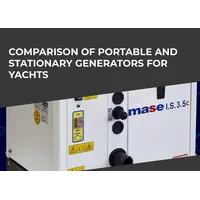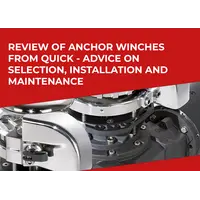topRik experts share their experience of mixing various generators and chargers, including alternative ones, during autonomous navigation.
We constantly test various electrical system options on motor, sailing yachts and catamarans and then select the best marine equipment for our clients. We did the same with our selection of generators, batteries and solar power systems – all the recommended ones are available for sale right now.
Types of Generators for Yachts
Generators are classified according to various parameters, the main ones:
- type of current generated - direct or alternating;
- type of fuel used by the generator engine - diesel, gasoline or gas;
- type of installation - portable (portable), stationary;
- rotor speed;
- ratio of the generator rotor speed and the stator magnetic field - synchronous and asynchronous;
- power.
In addition to these important characteristics, what matters for marine generators is which power consumers on board it “serves.” Thus, the traction batteries are charged by the DC generator of the driving motor. But the equipment on board can be powered from the same generator through an inverter, which converts direct current into alternating current.
If the yacht has a lot of equipment and devices that require power, an additional alternator can be used. Depending on the size of the boat, these may be portable models to which equipment that operates periodically, for example, an electric winch or some kind of electric tool such as a drill, can be connected to relieve the load on the electrical system.
If you, along with a motor and portable generator, also have a solar system on board, you can provide a so-called point charging system for electrical consumers on your yacht by connecting these consumers to different power sources.
But on a large yacht intended for long cruises with the most comfortable stay on board, the power of all equipment and devices will require a more powerful “supplier” of energy. Stationary alternating current generators cope well with this task.
The engines of all types of autonomous generators - portable and stationary - can run on gasoline and diesel fuel. There are gas models, but in ship conditions this is even more flammable than gasoline generators.
We already discussed the pros and cons of stationary and portable models operating on different types of fuel under conditions of long-term autonomous navigation in our previous articles.
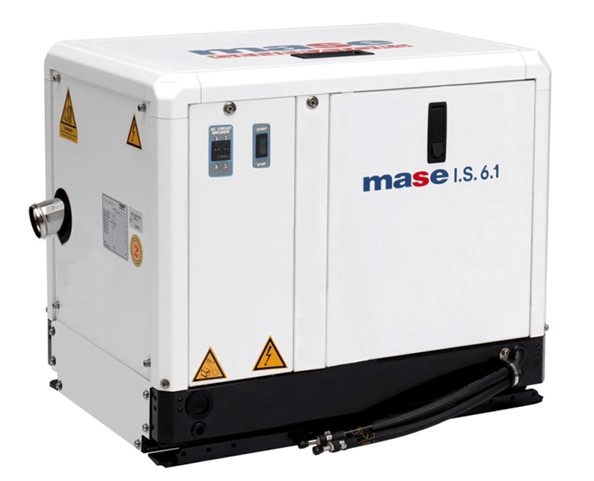
Types of Batteries for Yachts
The selection of a battery for an electric boat motor is carried out according to 3 main parameters: manufacturing technology, output power and capacity. Based on the electrode manufacturing technology, rechargeable batteries are divided into traction, starter and universal. All types of batteries are used on boats, but the appropriateness of their use depends on the type of engine and the mode of operation of the batteries.
Traction batteries are designed for stable cyclic operation in charge-discharge mode. They are designed for long-term use, release accumulated energy to the maximum, produce stable current and resist oxidation. Depending on the chemical composition, they can withstand 500–1000 operating cycles or more. It is traction batteries that are designed for intensive cyclic operation and frequent deep discharges, so they are excellent for powering boats and other electric motors.
Starter batteries are designed to supply high currents for short periods of time. They provide quick start of a diesel or gasoline engine, but are not suitable for use in constant energy output mode. Under prolonged loads, starter batteries quickly lose their charge and fail prematurely. On boats, catamarans and yachts they are used only to temporarily power the internal combustion engine when it is started.
According to the type of electrolyte, they are lead-acid with liquid electrolyte. They have a simple design consisting of positive and negative lead plates, between which there is a liquid electrolyte. During operation of a boat motor, the electrolyte heats up and evaporates, so such batteries require constant care (topping up with distilled water approximately 1-2 times a month). Installation: strictly in a horizontal position. Not very convenient for use in boats and boats where there is constant vibration.
An improved version of the lead-acid battery - AGM (Absorbent Glass Mat), in which the classic separator is replaced with fiberglass. Thanks to this, the electrolyte is stored inside the battery case and does not require topping up. The presence of an explosion-proof housing with protection against electrolyte leakage allows the use of such batteries in conjunction with electric boat motors. Their disadvantage: they are afraid of deep discharge.
Dual-use batteries are universal models that can operate in both modes. They produce a high starting current, but can also be used in charge-discharge mode as a constant power source.
Before you buy a boat battery, you need to determine its purpose and choose one of four types: liquid electrolyte, gel, AGM or lithium.
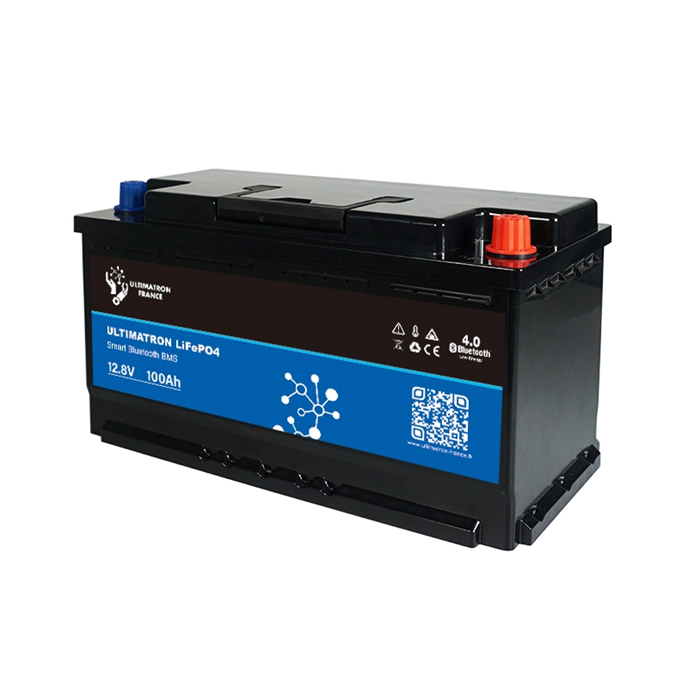
To power the outboard motor and other electrical equipment on board, you need a traction battery that can withstand deep discharges. Starter batteries are not suitable for such work - if used for other purposes, they quickly become unusable.
Three types of lead-acid batteries are used as traction batteries for electric boat motors, which differ in price, service life and technical characteristics.
Traction Batteries with Liquid Electrolyte
The most common type of battery for an electric boat motor. Available in capacities from 70 to 120 Ah, industrial batteries with a capacity of 140 Ah.
Batteries with liquid electrolyte require periodic checking and topping up with distilled water, and maintenance-free marine models allow this. Due to the free release of hydrogen in traction liquid acid batteries, they tolerate overcharging better than gel and AGM batteries, but they discharge by 6-7% per month and require maintenance charging on the boat between uses.
Liquid-acid batteries are installed only in a vertical position; they do not tolerate strong vibrations and tilts. The price of a traction battery for a boat electric motor with liquid electrolyte is lower than that of an AGM or gel battery of similar capacity and 5-7 times lower than that of lithium. With proper charging and maintenance, deep-cycle liquid-acid batteries can withstand from several hundred to a thousand charging cycles and can be used with a boat electric motor for 5-7 years.
Traction AGM Batteries
Sealed batteries have adjustable valves and layers of thin, highly porous fiberglass separator soaked in electrolyte and tightly compressed between the positive and negative plates of the battery. The separator ensures uniform electrolyte density over the entire surface of the plate, reinforces it and makes it resistant to shock and vibration.
The internal resistance of traction AGM batteries is lower, which means greater starting power and charging speed. They can be charged at up to 40 percent of capacity and can be reused with an electric boat motor faster than other types of traction batteries.
A service life of up to 10 years, self-discharge of 3% per month and the ability to restore the original capacity in 1-3 hours make AGM batteries indispensable for long-term autonomous navigation.
Requires a charger with adjustable charging voltage.
Traction Boat Batteries with Gel Electrolyte
Traction batteries with gel electrolyte have advantages over conventional liquid-acid batteries:
- self-discharge 1-3% per month;
- sealed;
- withstands the greatest number of charging cycles;
- do not require maintenance;
- valves built into the body maintain internal pressure at an excess level, but if necessary, open and equalize it;
- durable and vibration-resistant;
- allow installation on its side, safe for use on boats.
The batteries are designed to prevent outgassing and electrolyte spillage, making them safe to install near boat electronics. This type of battery lasts longer at elevated ambient temperatures and can withstand up to 2000 discharge cycles.
Traction gel battery is suitable for starting a boat motor with a power of up to 40 hp, connecting a 36, 24 or 12-volt electric motor, winch, pump, echo sounder, etc. The correct choice of charger is important for it - overcharging leads to a decrease in capacity and damages the battery. Requires a charger with adjustable charging voltage.
If the propulsion motor generator is the only source of charging on a boat or yacht, then the correct choice of its performance characteristics determines the charging duration, battery life and engine maintenance costs.
If the engine runs for a long time and the batteries are not discharged much, then a small generator of 50-60 amperes is enough to charge. Its operating mode is reminiscent of a car - full power for several minutes to recharge batteries that are 5-10% discharged, then reducing the output current to power on-board equipment. However, if the traction batteries are deeply discharged and the engine operating time is limited, a standard generator will not be able to charge them. A special high-power generator will be required. The decisive factor when choosing its characteristics is the speed at which the batteries accept charge.
For a traction battery that is half discharged, a current of 25 percent or more of the capacity is safe. But as the battery charges, the charge acceptance rate drops. At a charge level of 70%-80%, it is already 10-15% of the capacity. If the charging current is not reduced at this moment, the temperature of the battery will rise and the electrolyte in it will boil.
Each type of deep-cycle battery has its own maximum charging current. Gel and AGM batteries charge faster than thick plate liquid acid batteries. It is believed that at a discharge of 50% for AGM batteries, a current of 40% of the capacity is safe. However, recent experiments have shown that some types of these batteries can withstand a charging current equal to the capacity. Lithium-ion batteries allow a charge current exceeding 100% of capacity.
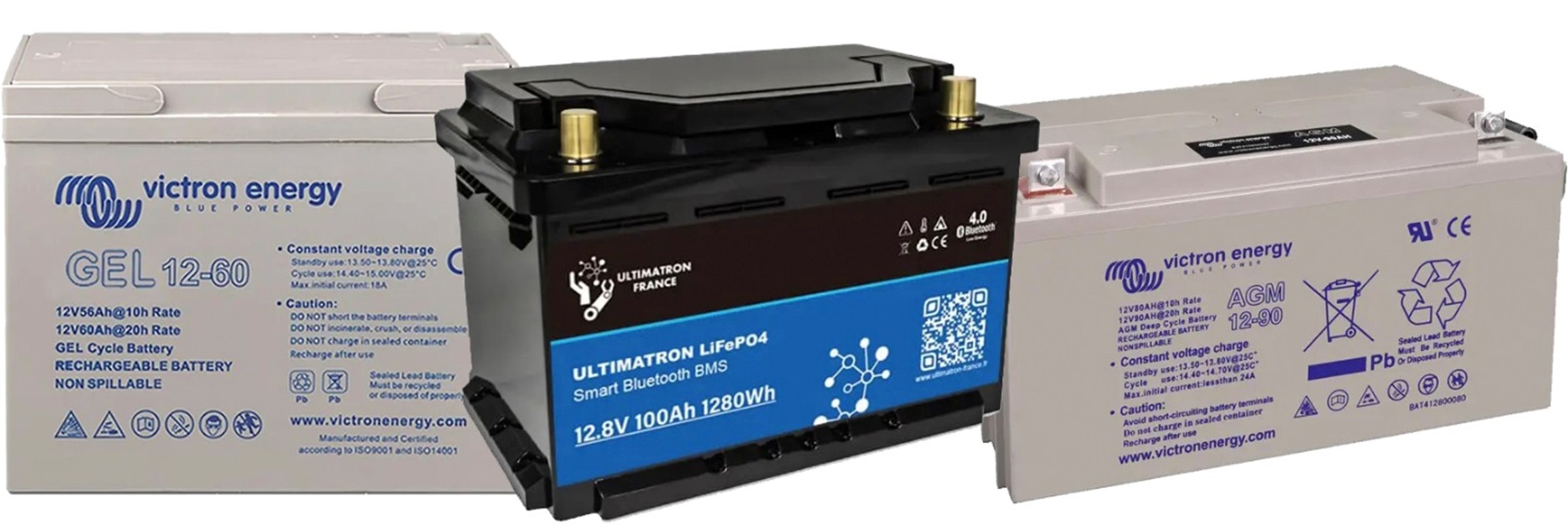
Operating Principles of Battery Charging Systems
The physical principles of converting mechanical energy into electrical energy are the same in both types of generators - alternating and direct current. The field winding or permanent magnets create a primary magnetic field in the generator housing. The motor causes the rotor to rotate, the magnetic flux passing through the armature windings changes, and an alternating voltage appears in them.
But classic DC generator sets have two fundamental disadvantages.
The generator output voltage has the required frequency only when its rotor rotates at a certain speed, usually 1500 or 3000 rpm. However, at such speeds the engine often does not develop full power and operates with low efficiency.
The engine speed should remain constant both when the generator is fully loaded and when the generator is idling. But without load, the engine operates extremely inefficiently and makes unnecessary noise. The cost of its maintenance increases and its service life decreases.
Diesel generators with variable engine speeds do not have such disadvantages, since the voltage is supplied to consumers not directly from the generator, but after several transformations. First, the rectifier converts the generator's AC output voltage to DC. Then an alternating voltage of the required frequency is obtained from the constant DC-AC inverter, and only after that the stabilized voltage is supplied to the on-board network of the yacht.
Variable speed units are designed in such a way that, at a given load, the engine operates with maximum efficiency. The generators use a permanent magnet rotor and have no belts, pulleys, brushes or any other adjustments. With the same performance, the alternators are lighter and more compact than traditional models, and their output voltage is cleaner and more stable.
Inverter as an Alternative to a Generator
For a long time, generator sets were the only source of alternating voltage on board a boat or yacht away from the shore. Inexpensive, reliable and efficient inverters have changed the situation. For loads up to 2kW, the cost of energy produced by the battery, inverter and charger is often half that of the most economical generator. However, for loads exceeding 2000 W, a diesel or gasoline generator is still indispensable.
The inverter converts 12 or 24 V DC voltage into 220 V AC voltage and serves as an excellent alternative to a generator.
There are two types of inverters. The output voltage of the first group is the same as in the city network and has the shape of a pure sinusoid. For the second group of devices, the voltage looks like a stepped square wave, which is why such models are called modified sine wave inverters.
The alternating voltage at the inverter output is obtained using electronic switches that open and close many times per second. If the switches operate several tens or hundreds of thousands of times, then the inverter is called high-frequency. And if the switching frequency is equal to the frequency of the output alternating voltage, then linear.
Linear and high-frequency devices differ in weight and size. A 2000 W linear inverter with both pure and modified sine wave weighs about 20 kg. A high-frequency model of the same power weighs half as much and occupies one third of the volume of a linear device.
High-frequency pure sine wave inverters are often less efficient than modified wave models and draw more current at no load. Since the battery charge is limited, the self-consumption of the inverter, left in standby mode for a long time, greatly affects the condition of the batteries on the boat or yacht.
Pure sine wave inverters are essential for running TVs, multimedia devices and AC motors. Microwave ovens are sensitive to both the shape and magnitude of the output voltage, so it is also better to connect them to a pure sine wave inverter
The neutral conductor of the AC circuit is grounded only at the voltage source. This means that before starting work, an inverter installed on board a boat or yacht must connect the neutral to its own ground wire, and after the vessel is connected to the shore power supply (or other alternating voltage source), disconnect them. All marine inverters do this automatically, but onshore ones do not. Therefore, before you buy an inverter for a boat or yacht, make sure that you purchase a model specifically designed for marine use.
The corresponding section of our marketplace presents various inverter models: from hybrid models for different types of batteries to powerful devices like Phoenix MultiPlus and Quattro, which combine a sophisticated battery charger with adaptive charging technology and a high-speed AC switch in one compact package.
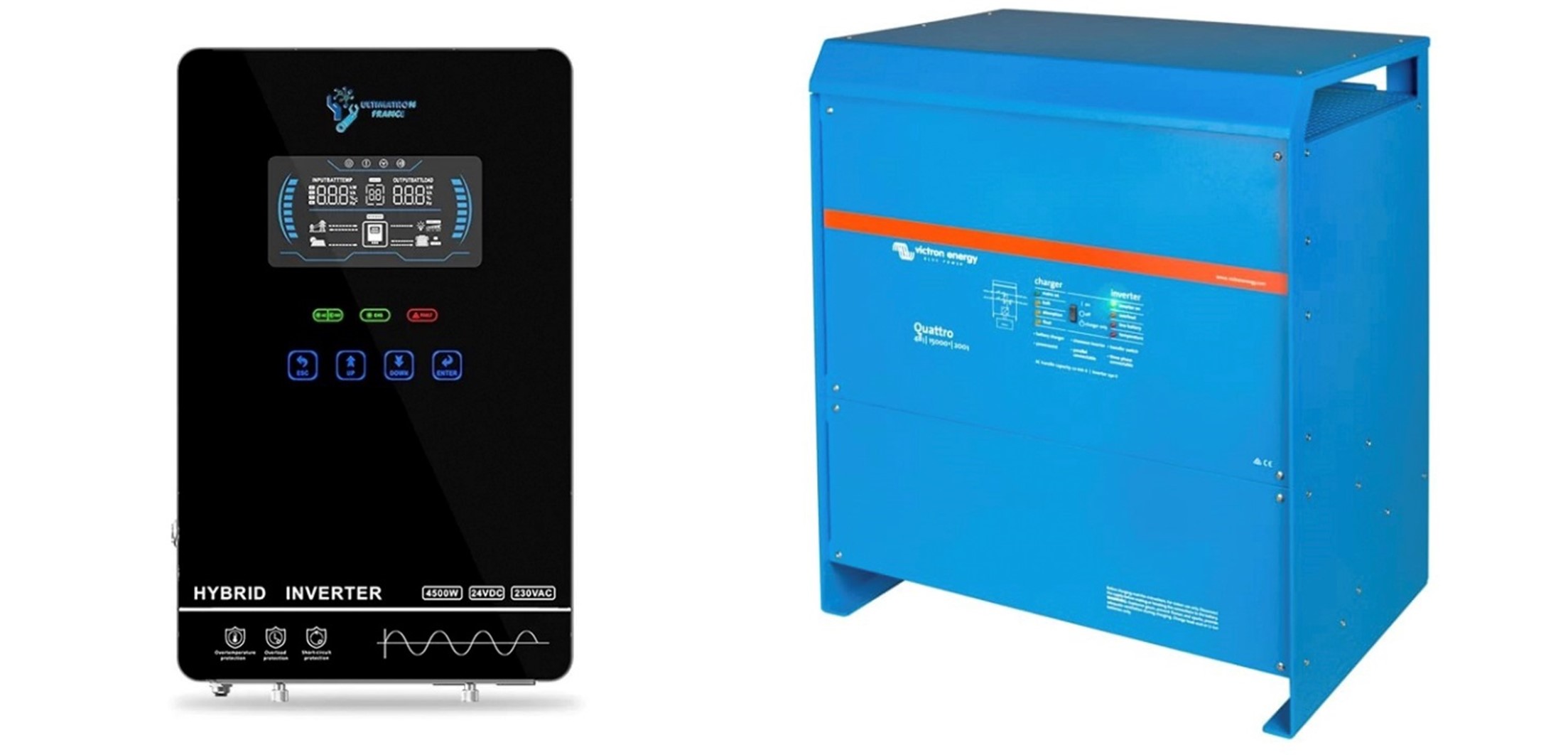
Integration of Generator and Charging System
The generator and batteries are components of a single on-board charging system, which will only work effectively when its elements are correctly matched to each other. The generator power must match the battery capacity and the voltage regulator settings must match the battery type.
This is especially important for LiFePO4 batteries. The voltage of iron phosphate batteries rises very slowly during charging, so it may take the generator several hours to raise it to a level at which the regulator will start to operate. During this time, it will deliver close to the maximum current and become very hot.
To prevent the generator from overheating, some regulators reduce the voltage as the temperature rises. The current in the circuit decreases and the generator cools down. Temperature compensation protects the generator, but reduces the charging speed - one of the main advantages of LiFePO4 batteries. Another problem is that the voltage and temperature levels of the regulator are not designed for lithium batteries, but for lead-acid batteries. Once the temperature compensated regulator lowers the voltage, it may be too low for the lithium battery and there will be virtually no charging current.
It becomes clear that, being a powerful source of electrical energy, a car-type generator is not suitable for safe operation with a LiFePO4 battery. He needs an additional device that will not only regulate the current in the circuit and protect the generator from overheating, but also provide the correct voltage for fast and safe charging of lithium batteries.
The charging DC-DC converter has these capabilities. Together with the generator, it forms a modern four-stage charger, in which the generator creates electrical energy, and the DC-DC converter controls it depending on the state of the battery.
Unlike a lead-acid battery, which cannot turn off the charger itself and must be manually turned off using a battery switch, a lithium battery management system can do this automatically. The battery management system controller shuts down the battery when the voltage, temperature, or current is too high or low.
Charge Controllers and their Functions
PWM and MPPT controllers are used to charge batteries from solar panels. The PWM controller works as a switch connecting the solar panel to the battery. As a result, the voltage of the solar panels is reduced to a level close to the voltage of the battery.
MPPT controller is a more complex and expensive device. To charge the batteries and power the load, it adjusts its input voltage to extract maximum power from the solar panel. The controller changes the output voltage depending on the condition of the battery. The voltages at the input and output of the MPPT controller are independent of each other. A 12-volt battery can be connected to its output, and series-connected solar panels with a voltage of 36 volts can be connected to the input.
MPPT controller is more effective than PWM in cold and temperate climates. In subtropical and tropical climates, both devices show approximately the same performance.
Solar panels will quickly charge batteries if the controller is able to select a point on the panel’s current-voltage characteristic that corresponds to its maximum power. Only the MPPT controller is capable of that.
The input voltage of the PWM controller is equal to the voltage of the battery connected to its output, plus the voltage loss in the cable and in the controller itself. With a PWM controller, the solar panel in most cases does not deliver maximum power.
Battery Charging Modes
When the traction battery is properly charged, it goes through three stages.
- Current is supplied to the battery from the charger, and it quickly gains up to 80% of its capacity. The duration depends on the capacity of the battery itself and the current with which it is charged. A charging current of 1/10 of the battery capacity is considered safe (some models allow fast charging with a high current of up to 1⁄2 or more of their capacity).
- Absorption (absorption). It proceeds at the voltage that we reached upon completion of the first charging stage, while the battery consumes only the amount of current that it can absorb at the supplied voltage. As full charge is achieved, the current gradually decreases. During the absorption stage, the battery receives the remaining 20% charge and when the current consumed during charging drops to 2% of capacity, the battery is considered almost fully charged.
- Maintenance charging. The voltage is reduced during the third stage to prevent the electrolyte from boiling. An unacceptably high voltage will inevitably lead to rapid aging of the plates due to corrosion, and insufficient voltage prevents the battery from charging 100% and maintaining a charge, which leads to sulfation. Therefore, at the third stage, by lowering the voltage, we bring the battery charge to the maximum.
Maintenance charging is also called "buffer" charging. It does not allow the batteries to go into the self-discharge stage and constantly maintains the maximum charge level of the batteries.
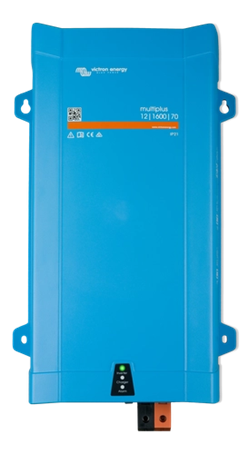
Since the design and operating methods of a yacht's starting and traction batteries are different, these batteries also need to be charged differently. The first option is a boat generator with a constant output voltage. The process of charging traction batteries consists of 3-4 stages, for each of which the charger sets its own voltage value.
With a properly selected charger, traction batteries last longer. At lower voltages, sulfation develops in the active material and the battery capacity drops rapidly. If it is elevated, the grids of the positive plates corrode. The gas pressure in the housing increases, it rushes out and takes away part of the electrolyte. Since it is impossible to replenish water loss in gel and AGM batteries, recharging for these batteries is unacceptable.
Modern chargers have an algorithm for each type of traction lead-acid battery. Batteries with liquid electrolyte are charged at 14.8 V and then desulfated at 15.1-15.5 V. Traction gel and AGM batteries - at 14.2-14.4 V. Sealed liquid acid - 14.4 V. In some charger models, the user can create his own voltage profile for any type of traction battery.
Therefore, before you buy a charger in our marketplace, find out the type of batteries on your yacht. If the battery consists of 2 or 3 traction batteries connected in parallel, buy a powerful charger. The recommended charger current is at least 10% of the battery capacity.
Make sure that the charger output voltage ripple level is 5% or less, the efficiency is 85-90%, and the power factor is close to 1.
FAQ
Is it possible to use one generator to charge different types of batteries on a yacht?
In electrical systems with one generator, a special charging device is required, which is connected between the starting and traction batteries. The device turns on and charges the second battery using a four-stage algorithm as soon as the generator starts working. Thanks to this, different types of batteries can be used simultaneously. Some models allow you to work with two different voltages - receive 12 volts at the input and output 24 or 36 volts.
If the electrical system consists of starting and service batteries of small capacity while the charging speed is not critical, use an isolating relay. For complex systems with multiple subsystems, different operating voltages and powerful charging devices, a battery controller and DC-DC chargers are suitable.
What to do if the generator is not charging the batteries properly?
The problem may not be with the generator, but with the batteries themselves. To make the power supply work longer, you should:
- add distilled water to models with liquid electrolyte;
- record the electrolyte density and water level;
- keep the surface of the battery case clean;
- periodically remove the cable and clean the terminals from corrosion;
- fully charge the battery if it will not work for 1-2 weeks. The point is self-discharge, the speed of which depends on the design of the power source and the ambient temperature;
- store only in a cool place;
- do not charge to 100% in cold climates, which may result in electrolyte freezing.
How does the type of battery affect the choice of charging system?
The batteries are discharged to 50 percent or more, but are not fully charged. This is how a service battery works on a yacht or the batteries of an outboard electric motor on a boat.
On the water, it is important to charge the batteries quickly, so the charging current should be as high as possible.
Each type of battery has its own safe charging current. For lead-acid batteries it is 0.2-0.4C, for lithium batteries it is 0.5-1C and higher. To prevent batteries from overheating during charging and intense gas emissions, DC-DC chargers with temperature compensation or current limitation are used. The charging speed increases by 5-10 times compared to charging directly from the generator.
Can overheating the generator damage the battery charging system?
A boat motor generator can become a powerful source of charging service batteries on a boat or yacht. But it is also capable of destroying an expensive battery in a short time.
Therefore, you should know exactly the characteristics of the generator or generators installed on the yacht, as well as the types of batteries and their compatibility. We hope this and previous articles by topRik experts on this topic will help you make the right choice.
How do you know that the battery is fully charged and the generator can be turned off?
The voltage of a fully charged battery is higher than that of a discharged battery. The simplest control method - measure the current battery voltage and compare it with the voltage of a fully charged battery. However, such an assessment turns out to be not very accurate. With it, we can only say with certainty that the battery is 100% charged or that it is completely discharged.
An ampere-hour meter can be used for the same purpose, but this method also has a drawback: the device cannot take into account battery losses.
The most reliable way is to install a battery condition monitoring system.




